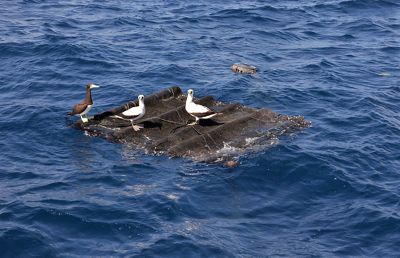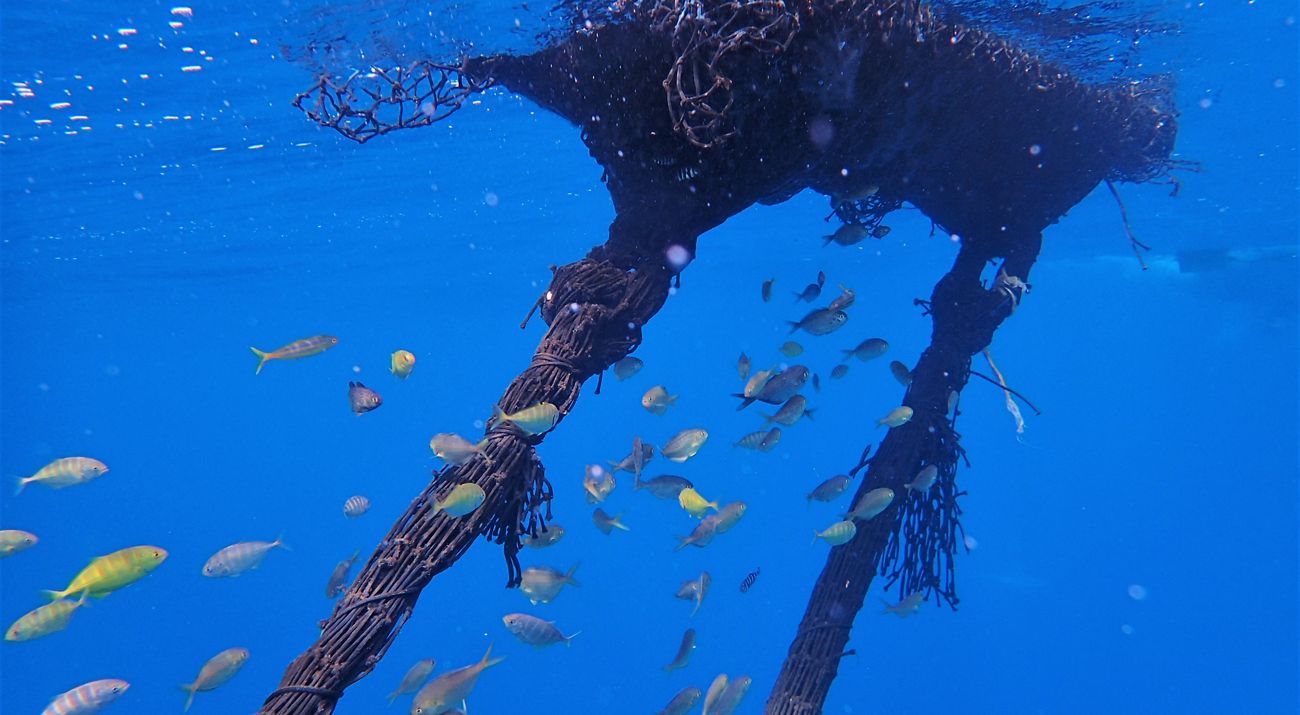A study published in the journal Conservation Letters reveals insights into how fish aggregating devices (FADs) could enhance the effectiveness of blue water marine protected areas. Co-authored by scientists from The Nature Conservancy and Queensland University of Technology (QUT), the paper suggests FADs, deployed by commercial fishing fleets worldwide, could be used to retain targeted fish species within MPAs long enough to benefit the local fish population.
“As governments and conservation groups world-round set sights on protecting 30% of the world’s ocean habitat by 2030, figuring out how to maximize the value of protected ocean patches for pelagic species should be a key objective,” says Alex Wegmann, Ph.D., co-author of the paper and lead scientist for TNC’s Island Resilience Strategy.

A FAD is a matt or raft attached to floats or buoys that can be anchored or designed to drift (dFAD) in the open ocean and attract fish that swim past in schools. dFADs are usually fitted with a satellite location device that also monitors fish biomass beneath the FAD. The species of pelagic fish commonly targeted by commercial operations using FADs include tuna, billfish and mahi-mahi (dolphin fish); globally, most canned tuna are caught using dFADs.
“The technology has transformed the world’s open ocean fisheries over the past 20 years,” says co-author Michael Bode from QUT. “Drifting FADs attract schools of these fish, making them easier and cheaper to catch.”
While larger than nearshore MPAs, blue water MPAs are small relative to the vast ocean, making protecting pelagic species in these areas difficult.
“By putting FADs inside MPAs, we could increase the time that species like tuna spend in those MPAs (where they can't be caught), thereby reducing mortality rates,” says co-author Edward T. Game, TNC’s Asia Pacific lead scientist and director of conservation. “Somewhat amazingly, we found that even a small number of FADs inside a blue water MPA can meaningfully amplify the benefits of that MPA.”
Palmyra Atoll is a protected area in the central Pacific Ocean roughly 1,000 miles south of Hawai‘i.
“Using FADs as a conservation tool is unique,” says co-author Kydd Pollock, pelagic conservation strategy lead with The Nature Conservancy’s Climate Adaptation and Resilience Laboratory at Palmyra Atoll. “We can have control over where they are positioned so therefore can keep them inside an MPA and use them to aggregate the fish and increase their residence time within protected waters.”
Images available here.
# # #
The Nature Conservancy is a global non-profit organization dedicated to conserving the lands and waters on which all life depends. Informed by science and guided by traditional values and practices, we apply innovative, nature-based solutions to our world’s toughest challenges so that nature and people can thrive. TNC has forged partnerships to manage 14 preserves and other sites in Hawai‘i and Palmyra Atoll, working with government, private parties and communities to protect Hawai‘i’s and Palmyra’s forests and coral reefs for their ecological value and for the many benefits they provide to people. Visit nature.org/HawaiiPalmyra.
The Nature Conservancy is a global conservation organization dedicated to conserving the lands and waters on which all life depends. Guided by science, we create innovative, on-the-ground solutions to our world’s toughest challenges so that nature and people can thrive together. We are tackling climate change, conserving lands, waters and oceans at an unprecedented scale, providing food and water sustainably and helping make cities more resilient. The Nature Conservancy is working to make a lasting difference around the world in 81 countries and territories (40 by direct conservation impact and 41 through partners) through a collaborative approach that engages local communities, governments, the private sector, and other partners. To learn more, visit nature.org or follow @nature_press on X.
